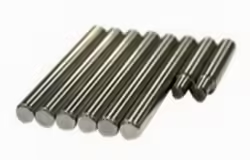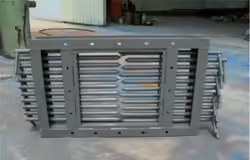
Stop Guessing! 5 Essential ASTM 1020 Steel Properties
Table of Contents
Introduction
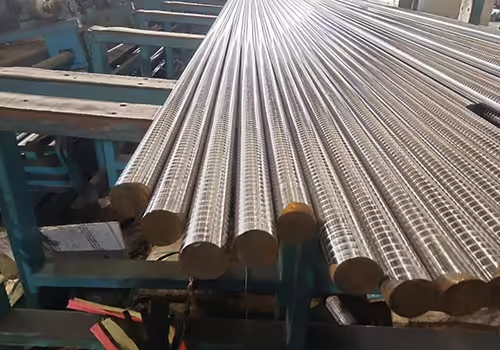
In the vast landscape of metallurgy, ASTM 1020 steel stands as a cornerstone material, widely utilized across industries ranging from automotive and manufacturing to construction and agriculture. Its popularity stems from a unique combination of properties that make it a versatile and cost-effective choice for numerous applications. However, a lack of understanding about the ASTM 1020 steel properties can lead to improper usage, suboptimal performance, and even costly failures. This blog aims to demystify five essential properties of ASTM 1020 steel, empowering engineers, fabricators, and enthusiasts to make informed decisions and harness the full potential of this remarkable material.
Chemical Composition: The Building Blocks of ASTM 1020 Steel
The Role of Carbon in ASTM 1020 Steel
The chemical composition is the fundamental determinant of ASTM 1020 steel properties, with carbon playing a pivotal role. As a low-carbon steel, ASTM 1020 contains around 0.18 – 0.23% carbon by weight. This specific carbon content is a key factor shaping many of the ASTM 1020 steel properties, endowing the steel with notable ductility and formability. These characteristics make it adaptable for various shaping processes like rolling, forging, and cold drawing. When considering ASTM 1020 steel properties in comparison to high-carbon steels, the lower carbon level ensures that ASTM 1020 steel can be worked into complex geometries without the common risk of cracking or fracturing, which is a significant advantage in manufacturing applications.
Other Alloying Elements and Their Impact
Beyond carbon, the presence of other alloying elements also significantly impacts ASTM 1020 steel properties. Manganese, typically found in the range of 0.60 – 0.90%, contributes to enhancing the steel’s strength and hardenability. In the context of ASTM 1020 steel properties, manganese also functions as a deoxidizer during production, improving the steel’s purity. On the other hand, elements like phosphorus and sulfur, present in trace amounts (usually less than 0.04% each), need careful monitoring. An imbalance in these elements can negatively affect ASTM 1020 steel properties, reducing its ductility and toughness. Understanding the role of these alloying elements is crucial for predicting and leveraging ASTM 1020 steel properties in different applications.
How Chemical Composition Influences Properties
The intricate balance of elements within ASTM 1020 steel directly influences its mechanical, physical, and fabrication properties. For instance, the low carbon content is a major contributor to the excellent weldability among ASTM 1020 steel properties, as it minimizes the risk of cracking during welding. Meanwhile, the presence of manganese contributes to the steel’s moderate strength, another important aspect of ASTM 1020 steel properties, making it suitable for applications that demand a combination of formability and load-bearing capacity. By understanding how chemical composition shapes ASTM 1020 steel properties, engineers and manufacturers can better utilize this material to meet specific project requirements.
Mechanical Properties: Strength, Ductility, and Toughness

Tensile Strength and Yield Strength
Mechanical strength is one of the most critical ASTM 1020 steel properties. Typically, ASTM 1020 steel exhibits a tensile strength ranging from 415 – 550 MPa and a yield strength around 250 – 380 MPa. These values are essential indicators when evaluating ASTM 1020 steel properties, as they determine the amount of stress the steel can endure before breaking or undergoing permanent deformation. While not as strong as high-strength alloy steels, the moderate strength within ASTM 1020 steel properties makes it a viable option for numerous applications, such as structural components in buildings, automotive parts, and general machinery. Understanding these strength-related ASTM 1020 steel properties is vital for ensuring the reliability and safety of products made from this material.
Ductility: The Ability to Deform Without Breaking
Ductility is another standout ASTM 1020 steel property. Thanks to its low carbon content and fine-grained microstructure, ASTM 1020 steel can be stretched, bent, or drawn into various shapes without fracturing. Measured by the percentage elongation during a tensile test, ASTM 1020 steel often shows an elongation of 25 – 35%. This significant ductility within ASTM 1020 steel properties makes it particularly suitable for processes like cold heading, where metal needs to be shaped under pressure at room temperature. The ability to deform without breaking is a valuable ASTM 1020 steel property that broadens its application scope in manufacturing.
Toughness: Resisting Impact and Fracture
Toughness, the capacity to absorb energy and resist fracture under impact, is an essential ASTM 1020 steel property. Compared to higher-carbon steels, ASTM 1020 steel offers good toughness, which is attributed to its fine-grained structure and low carbon content. This toughness within ASTM 1020 steel properties allows it to withstand sudden loads and vibrations without cracking, making it ideal for applications where impact resistance is crucial, such as in the production of gears, shafts, and fasteners. Considering this ASTM 1020 steel property ensures that components can perform reliably under dynamic and challenging conditions.
| Property | ASTM 1020 Steel Range | Significance |
| Tensile Strength | 415 – 550 MPa | Determines maximum load-bearing capacity |
| Yield Strength | 250 – 380 MPa | Indicates onset of permanent deformation |
| Elongation | 25 – 35% | Measures ductility and formability |
| Impact Toughness | Moderate | Resists fracture under sudden loads |
Fabrication Properties: Ease of Working with ASTM 1020 Steel
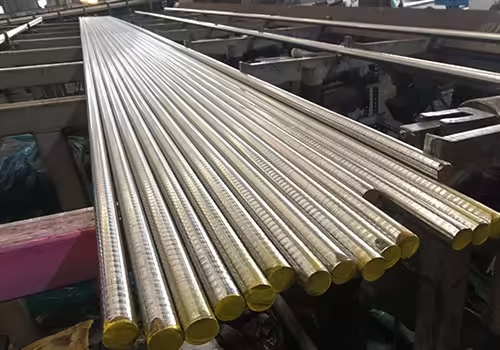
Weldability: A Key Advantage
Among the notable ASTM 1020 steel properties, excellent weldability stands out as a key advantage. The low carbon content inherent in ASTM 1020 steel plays a crucial role in minimizing risks like hydrogen-induced cracking, an issue commonly encountered in higher-carbon steels during the welding process. This unique characteristic of ASTM 1020 steel properties enables the use of diverse welding methods, including arc welding, gas welding, and resistance welding, to join its components seamlessly.
Whether it’s for fabricating a robust steel frame for a commercial building or assembling intricate parts for industrial machinery, the superior weldability within ASTM 1020 steel properties not only saves significant time but also substantially reduces overall costs. Understanding and leveraging this ASTM 1020 steel property is essential for maximizing efficiency in fabrication projects.
Machinability: Shaping with Precision
Among the notable ASTM 1020 steel properties, excellent weldability stands out as a key advantage. The low carbon content inherent in ASTM 1020 steel plays a crucial role in minimizing risks like hydrogen-induced cracking, an issue commonly encountered in higher-carbon steels during the welding process. This unique characteristic of ASTM 1020 steel properties enables the use of diverse welding methods, including arc welding, gas welding, and resistance welding, to join its components seamlessly.
Whether it’s for fabricating a robust steel frame for a commercial building or assembling intricate parts for industrial machinery, the superior weldability within ASTM 1020 steel properties not only saves significant time but also substantially reduces overall costs. Understanding and leveraging this ASTM 1020 steel property is essential for maximizing efficiency in fabrication projects.
Heat Treatment: Tailoring Properties to Requirements
While ASTM 1020 steel has inherent properties that make it suitable for many applications, heat treatment can further enhance or modify its characteristics. Annealing, for instance, involves heating the steel to a specific temperature and then slowly cooling it to improve its ductility and reduce internal stresses. Normalizing, on the other hand, can increase the steel’s strength and hardness. By carefully controlling the heat treatment process, manufacturers can tailor the ASTM 1020 steel properties to meet the specific requirements of different applications.
Corrosion Resistance: Protecting Against the Elements
Natural Corrosion Resistance of ASTM 1020 Steel
ASTM 1020 steel, like most carbon steels, has limited natural corrosion resistance. When exposed to moisture and oxygen in the atmosphere, it will gradually rust over time. The iron in the steel reacts with oxygen and water to form iron oxide, commonly known as rust, which can weaken the material and reduce its lifespan. However, compared to some other steels, ASTM 1020 steel’s low carbon content can slow down the corrosion process to a certain extent.
Methods for Enhancing Corrosion Resistance
To protect ASTM 1020 steel from corrosion, various surface treatment methods can be employed. Painting is one of the simplest and most common ways, as it creates a barrier between the steel and the environment. Galvanizing, which involves coating the steel with a layer of zinc, provides excellent corrosion protection as zinc is more reactive than iron and will corrode preferentially, sacrificing itself to protect the underlying steel. Other methods, such as powder coating, electroplating, and applying corrosion-resistant coatings, can also significantly extend the service life of ASTM 1020 steel components in corrosive environments.
Applications in Corrosive Environments
Despite its limited natural corrosion resistance, ASTM 1020 steel is still used in many outdoor and industrial applications where proper corrosion protection measures are taken. For example, in the construction of bridges, pipelines, and outdoor structures, ASTM 1020 steel components are often galvanized or painted to withstand the harsh conditions of exposure to rain, saltwater, and industrial pollutants.
Cost-Effectiveness: Balancing Performance and Budget
Affordability Compared to Other Steels
One of the main reasons for the widespread use of ASTM 1020 steel is its cost-effectiveness. Compared to high-strength alloy steels or stainless steels, ASTM 1020 steel is relatively inexpensive. Its simple chemical composition and straightforward manufacturing process contribute to its lower production costs, which in turn make it an attractive option for applications where cost is a significant factor. Whether it’s a small-scale fabrication project or a large industrial production run, using ASTM 1020 steel can help keep costs under control without sacrificing too much in terms of performance.
Total Cost of Ownership
When evaluating the cost-effectiveness of ASTM 1020 steel, it’s important to consider not only the initial purchase price but also the total cost of ownership. Its good fabrication properties, such as ease of welding and machining, can reduce labor costs during production. Additionally, its moderate mechanical properties mean that it can meet the requirements of many applications without the need for more expensive, high-performance materials. In the long run, the combination of low initial cost and reasonable maintenance and replacement expenses makes ASTM 1020 steel a financially viable choice for a wide range of industries.
Applications Where Cost-Effectiveness Matters
ASTM 1020 steel is commonly used in applications where a balance between performance and cost is crucial. In the automotive industry, it’s used for parts such as brackets, bolts, and some structural components. In construction, it’s employed for framing, reinforcement bars, and general-purpose structural elements. In agriculture, it’s used to make tools, equipment frames, and storage containers. In all these cases, the cost-effectiveness of ASTM 1020 steel makes it a preferred material choice.
Applications: Where ASTM 1020 Steel Shines
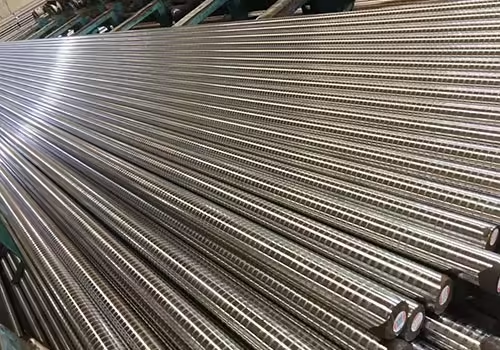
Automotive Industry
In the automotive sector, ASTM 1020 steel plays a vital role. Its combination of formability, moderate strength, and cost-effectiveness makes it suitable for manufacturing a wide range of components. From engine brackets and suspension parts to interior trim pieces and fasteners, ASTM 1020 steel is used extensively. Its good machinability allows for the production of precision parts, while its weldability enables the assembly of complex structures.
Construction Industry
The construction industry also benefits greatly from the properties of ASTM 1020 steel. It’s used in the construction of buildings, bridges, and other infrastructure projects for structural framing, beams, and columns. Its strength and durability ensure the stability and safety of structures, while its affordability makes it a practical choice for large-scale construction. Additionally, its ease of fabrication allows for quick and efficient construction processes.
Manufacturing and Machinery
In manufacturing and machinery applications, ASTM 1020 steel is used to make gears, shafts, couplings, and other mechanical components. Its mechanical properties, such as strength, ductility, and toughness, enable it to withstand the rigors of heavy use and mechanical stress. Its good machinability also allows for the production of parts with tight tolerances, ensuring smooth operation of machinery.
Conclusion
In conclusion, understanding the ASTM 1020 steel properties is essential for anyone working with this versatile material. The five properties explored in this blog – chemical composition, mechanical properties, fabrication properties, corrosion resistance, and cost-effectiveness – collectively define the capabilities and limitations of ASTM 1020 steel. By leveraging its strengths, such as good formability, weldability, and cost – effectiveness, and addressing its weaknesses, such as limited corrosion resistance, engineers and fabricators can make the most of ASTM 1020 steel in a wide variety of applications.
Whether it’s in the automotive, construction, manufacturing, or any other industry, a comprehensive knowledge of these properties empowers professionals to select, use, and optimize ASTM 1020 steel, leading to more efficient, reliable, and cost-effective designs and products. So, stop guessing and start harnessing the full potential of ASTM 1020 steel today.
FAQ
Can ASTM 1020 steel be heat treated to increase its hardness?
Yes, ASTM 1020 steel can be heat treated to increase its hardness. Processes such as quenching and tempering can be used to modify its mechanical properties. Quenching involves heating the steel to a high temperature and then rapidly cooling it in a medium such as oil or water, which increases its hardness. Tempering, which is usually done after quenching, involves reheating the steel to a lower temperature to reduce its brittleness and improve its toughness while retaining some of the increased hardness.
How does ASTM 1020 steel compare to other low-carbon steels?
Compared to other low-carbon steels, ASTM 1020 steel offers a good balance of properties. Its specific chemical composition, with controlled amounts of carbon, manganese, and other elements, gives it unique characteristics. For example, compared to some other low-carbon steels with similar carbon content, ASTM 1020 steel may have better mechanical properties due to its optimized manganese content, which enhances its strength and hardenability. However, the choice between different low-carbon steels often depends on the specific requirements of the application, such as formability, weldability, and cost.
Is ASTM 1020 steel suitable for outdoor applications?
ASTM 1020 steel can be used for outdoor applications, but it requires proper corrosion protection. As mentioned earlier, its natural corrosion resistance is limited, and it will rust when exposed to the elements. To ensure its durability in outdoor environments, surface treatments such as painting, galvanizing, or powder coating should be applied. With the right protection, ASTM 1020 steel can be used for outdoor structures, fences, and other applications where it will be exposed to moisture and oxygen.
What is the maximum load that ASTM 1020 steel can support?
The maximum load that ASTM 1020 steel can support depends on its cross-sectional area, the type of loading (e.g., tensile, compressive, bending), and the safety factor required for the application. Using its tensile strength and yield strength values as a guide, engineers can calculate the maximum load based on the specific geometry and design of the component. For example, in a simple tensile application, the maximum load can be calculated by multiplying the cross-sectional area of the steel by its yield strength (with an appropriate safety factor applied).

